Given this is an English language blog, the vast majority of images on it of journalists, writers, entertainment people and politicians using typewriters are bound to show machines made by the leading American brands: Corona, Remington, Royal and Underwood. Which means, of course, that typewriters from the world’s next largest producer, Germany, and other countries such as Japan, Italy, Spain and Brazil, tend to be neglected. Here’s a small effort to redress that imbalance, a few photos showing people using machines other than US typewriters.
Alpina
An unnamed lady in an office (perhaps a promotional picture for the brand).
Erich Helmensdorfer (1920-2017), a German journalist and television presenter in his Munich office.
French-born actress Isabelle Huppert (1953-) in the 1991 movie Malina with German actor Mathieu Carrière (1950-).
Orga-Privat
Hans Fallada’s letter to publishing house Rowohlt-Verlag Berlin. Fallada (1893-1947, born Rudolf Wilhelm Friedrich Ditzen) was a German writer. The typewriter was photographed in his former house in Carwitzetzt.
Triumph
A woman at a typewriter in 1941.
Secretary Liselotte Schmidt, in 1954.
Esther Margareta Vilar (1935-, born Esther Margareta Katzen) is an Argentine-born German writer. Photo taken in 1972.
Lonny Kellner (1930-2003) was a German singer and actress and the wife of comedian, radio and television personality Peter Frankenfeld.
Siemag
Alfons Bauer (1920-1997 ) was a German composer and zither player. This photo was taken in Hamburg in 1955.
Gossen Tippa
Hugo Andreas Hartung (1902-1972) was a German writer, radio play author and occasional screenwriter. Seen here in 1962.
Adler Tippa S
Isla Werner (1921-2005) was a German actress. Photo taken in 1991.
Adler
Liselotte (“Lilo”) Pulver (1929-) was a Swiss actress who played James Cagney's attractive secretary “Fräulein Ingeborg” in Billy Wilder's comedy One, Two, Three (1961).
Erika Model 14
Sarah Kirsch (1935-2013) was a German poet. She was born Ingrid Bernstein in Limlingerode, Prussian Saxony. Photo taken in 1972.
Silver-Seiko
Curd Jürgens (1915-1982, born Curd Gustav Andreas Gottlieb Franz Jürgens) was a German-Austrian stage and film actor. He was usually billed in English-speaking films as Curt Jurgens. Photo taken in 1976.
Horst Janson (1935-), a German actor, seen here with his daughter Sarah-Jane in Grafing, Munich, in 2006.
Olivetti Dora
German actors Horst Werner Buchholz (above, 1933-2003) and Hardy Krüger (below, 1928-, born Franz Eberhard August Krüger). Buchholz in Munich, Krüger in Los Angeles.
Olivetti Lettera 35
Maria Ilva Biolcati (1939-) is an Italian singer, stage and film actress, and television personality. Photo taken in 1985.
Princess
Klaus Huebner (1924-) is a former German politician and police officer. Photo taken in 1987.
Olivetti Valentine
Alexander May (1927-2008) was an actor and writer as well as a director, editor, producer and poet.
Olympia SG1
French singer Johnny Grey.
Olympia Monica de Luxe
and Olympia International
Rheinmetall
John von Düffel (1966-) is a German dramaturge and writer. Pictured in the Thalia Theatre, Hamburg
Hermes Baby
Aldona Gustas (1932-) is a Lithuanian-born German poet and illustrator.
Continental
Arno Hellmis (1901-1940) was a German sports reporter during the Nazi era.
Brother
Ottfried ‘Otti’ Fischer (1953-) in the TV film The Bestseller. With him is his co-star, Nina Proll (1974-), an Austrian actress.
Olivetti Praxis 48
Singer and actor Roy Black (1943-1991, born Gerhard Höllerich) with his brother Walter Höllerich in Munich in 1977.
Adler Gabriele 12
Manfred Krug (1937-2016) was a German actor, singer and author. Photographed in 1980 in Berlin.
Olympia
Alfred Weidenmann (1916-2000) was a German film director, screenwriter and author of children's books.

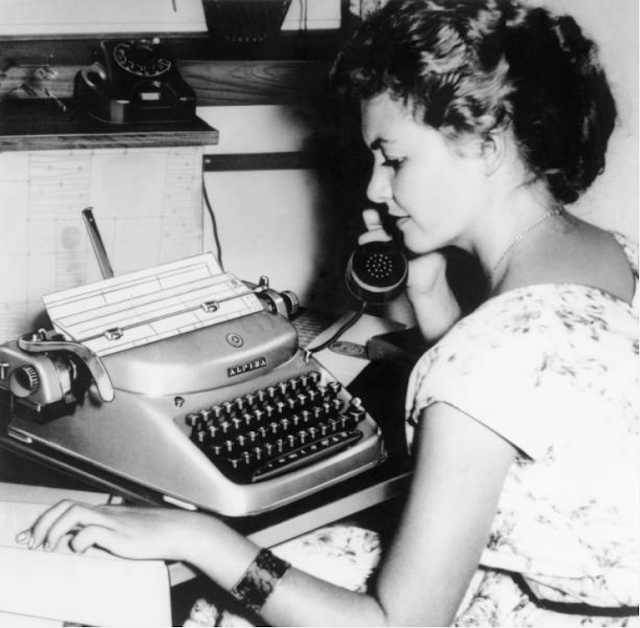
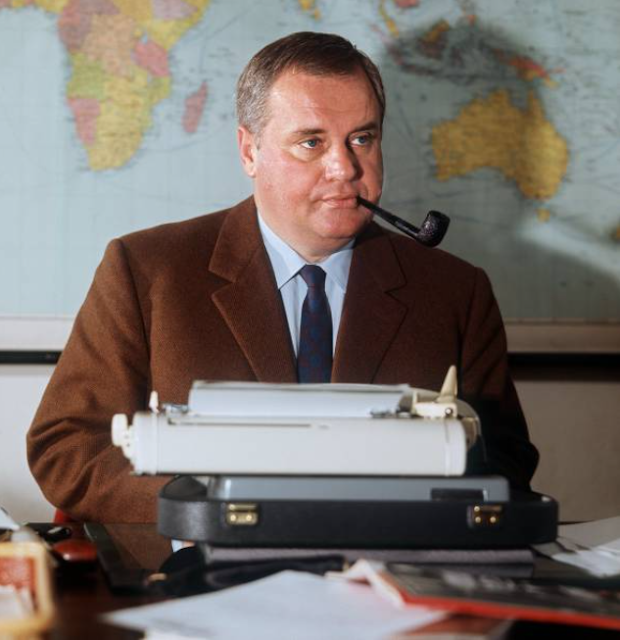

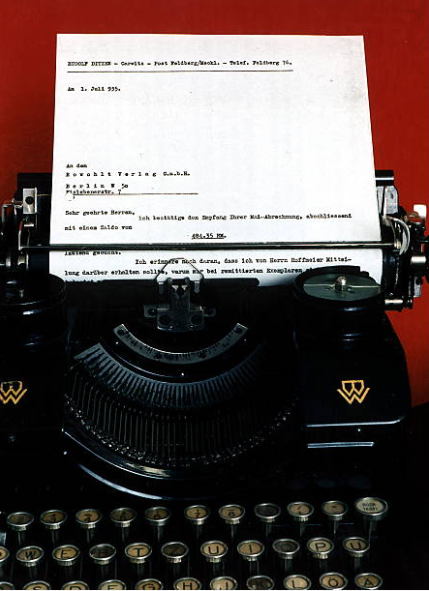











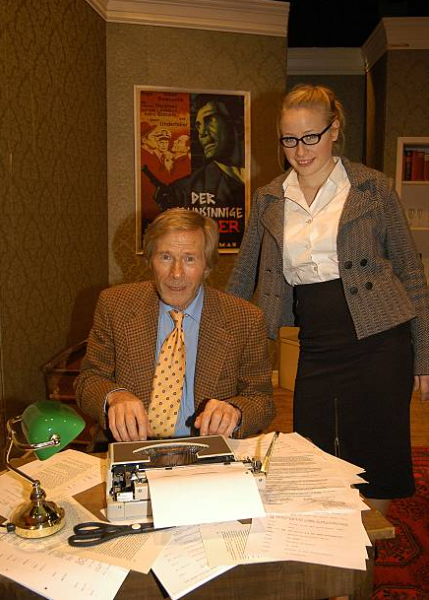



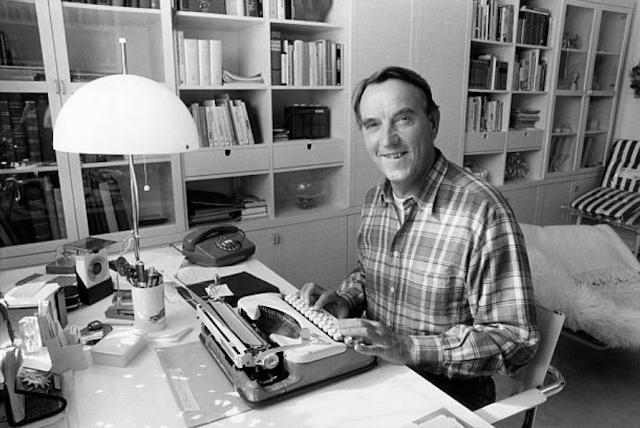




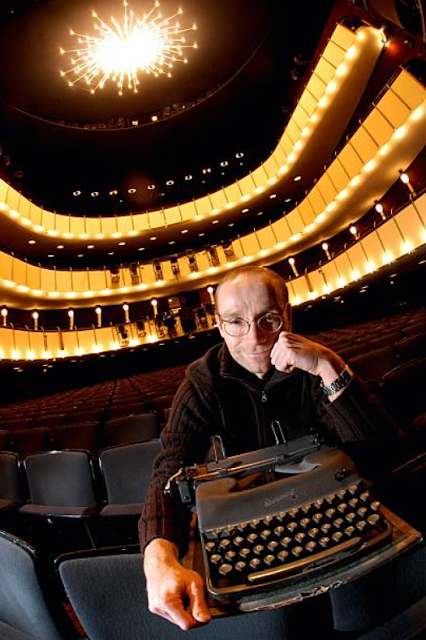






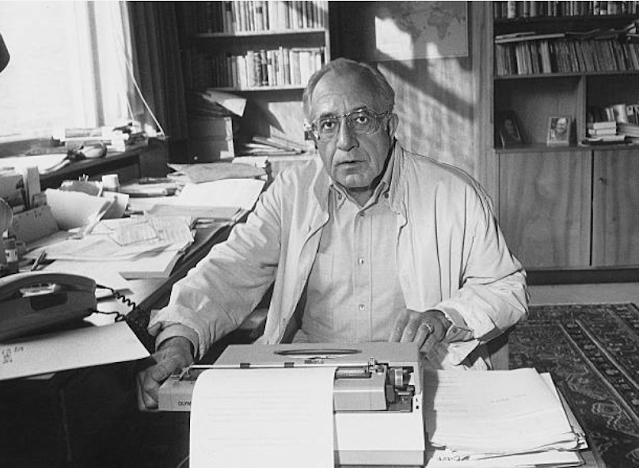
8 comments:
Hello. I’ve become an avid reader of your blog. I’m loving the typewriter history. I came to your blog tonight to see if there was an email address for you. This post from you today is very fitting with the question I wanted to ask you. Last night while sorting out old family photos, I discovered a photo of my mother, which I would date as late 1950’s sitting at her desk at work. On her desk is a typewriter. Unfortunately I can’t read the name and my mother has passed away so I can’t ask her. I was hoping you might have an idea what that typewriter is. If you are happy to take a look, please contact me with an email address and I’ll email the photo to you. I apologise for putting this in a comment but I could t work out how else to reach you.
Very nice photos of machines we don't see that often in the USA.
The Alpina is one of the best typewriters I ever used.
Morning Robert:
Great photos. I am always interested in these beautiful machines. Particularly the Alpina which most people overlook. Keep going I enjoy everyone of your posts.
Regards,
John
Whoa! Those ones are fancy and beautiful typewriters! :D
Also, I am amazed by the fact there is an Olivetti Lettera 31 among them! I used to have one. :D
And an Olivetti Valentine too! <3
Here in Mexico, my country, the most common brands were (and still are) Olympia and Olivetti. Actually there was an Olympia factory at the suburbs of Mexico City, working until 2007 or so on. There also are Olivetti typewriters made in Mexico, but I am not sure about where the factory was.
From my own life experience and what I have seen (I was born in 1991), the most common Olympia model is the SG-3. When I was a child (90's and early 2000's), the typical Mexican office (specially those ones related to government) had a bunch of them working at the same time. Unlike nowadays, getting asleep at the office was impossible. Also, the typical Mexican junior high school and high school, where typewriting and office stuff were taught as subject, you could find a bunch of students making the Olympia SG-3 to work, learning how to type and how to write properly, without typos. Actually I learned how to type at one, and that's why I own a huge Olympia SG-3. Besides nostalgia, that model is the war tank of an office or a school.
And when I was young (late 2000's and early 2010's) you still could find relatively new machines at the repair workshops (the only place in Mexico were you can find a typewriter that works is at the repair workshop). I got mine at one of them. There still is a bunch of pieces to repair them, and Mexican repairpeople learned how to repair, refurbish, upkeep and tune up them without manuals and yet they do a great work. I carry mine to the workshop from time to time (it's pretty heavy, though). :P
Regarding Olivetti, the rival of the Olympia SG-3 is the Olivetti Linea 98 over here (there are some Linea 88 models too, but at thrift stores and not working anymore; I'm not sure about the availability of pieces to repair them). It's relatively easy to find, but not as easy as the Olympia model. The Olivetti models that still are quite easy to find are the Lettera 25, 31, 32 and 35, and the Studio 45 and 46. Specially the Lettera 32, preferred by college students of medicine, law and literature (I studied literature as major, but I moved to the college carrying my huge machine with me) who have to visit villages without electricity, running water nor sewage to do what we call "social service" down here (ordered by the government in order to get your diploma). I used to own a Lettera 25, in which I used to do the homework for the typewriting class when I was young. I owned a Lettera 31 too, and I used to abuse it a lot, typing over two thousands of pages to write down a book I couldn't publish (I shouldn't have sold it. I regret. It was a rare model made in Spain). Now I own an Olivetti Studio 46 (made in Mexico, and not the same quality as the Lettera 31).
There are other brands that are sort of rare and kind of hard to find, like Hermes, Smith-Corona and Remington. Hermes Rocket is the easiest to find among them. I had one once (re-branded as Japy L-80). Remington models are rather "classic" and hard to find (the most common of them is the Remington Rand). Same case with Smith-Corona, which I'm not able to identify.
I forgot mentioning the Olivetti Lettera 22, Studio 44, Lexikon/Lexicon 80 and (Lettera/Praxis) 82 (not confusing with the Hermes Rocket rebranded as Olivetti Lettera 82) are collected, considered "classic models" and rarely sold over here. There is a small sector of Mexican population who feel nostalgia towards them (specially if they had a work related to typing) and keep their machines with themselves. I was about to swap my Olympia SG-3 for an Olivetti 82 with large carriage and small typeface, but someone else came first and I couldn't. :(
Once I found a pretty rare Olympia SM-9, but since it had a typeface hard to read (one that imitates handwriting), I decided not to get it. Those models are like little SG-3 models and almost impossible to find, as they were made in Germany (and yet it had the Mexican keyboard layout, which is different of the Spaniard one) and, for some strange reason, finding machines from other countries is very hard over here. :(
I wish I could find photos of famous Mexican writers and journalists with their typewriters, but I couldn't. Rather, there are some photos of famous writers and journalists from other Spanish-speaking countries who immigrated to Mexico, and it's rare when one of those photos include a typewriter. You, English-speakers, are more lucky in that sense. Anyways, I enjoyed watching those photos. Thanks for the post. I loved it. <3
The document in the Orga-Privat shows the German double-spacing method of emphasis (e.g. B e r l i n). Olympia SG1 and SG3 models have a key lock for this feature. I haven't seen it before "in the wild," so to speak.
Nice to see a Swiss-made Hermes Baby. I've had a Hermes 3000 since I was 17 (~50 years).
hey robert. unrelated post so please forgive the non sequitur of it all.
some dude using your name hit me up on instagram and asked about bitcoin. thinking it was you, i sent a kind reply. then i thought something was fishy, went to his feed and determined he is not you.
this is only to confirm before i unfollow and report the sorry bum.
if it is you, please accept my apologies.
T
Post a Comment